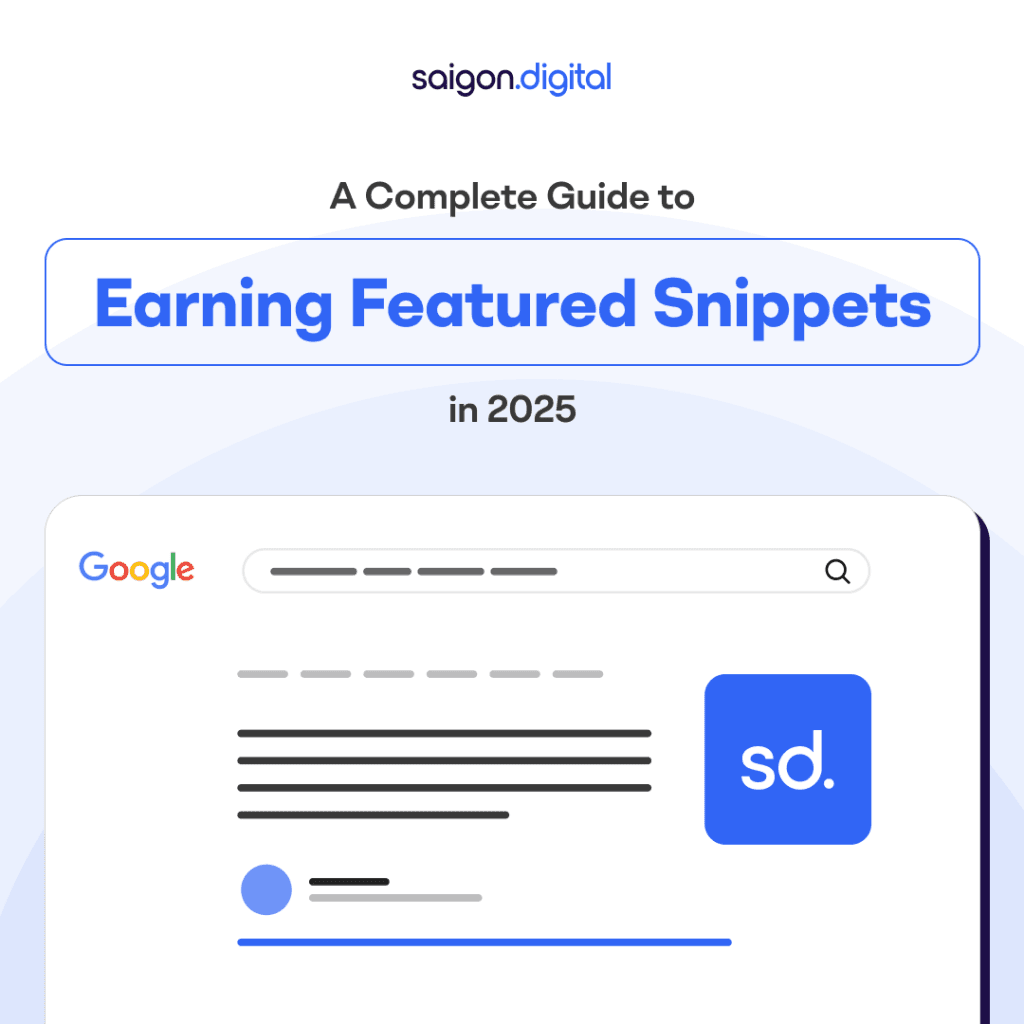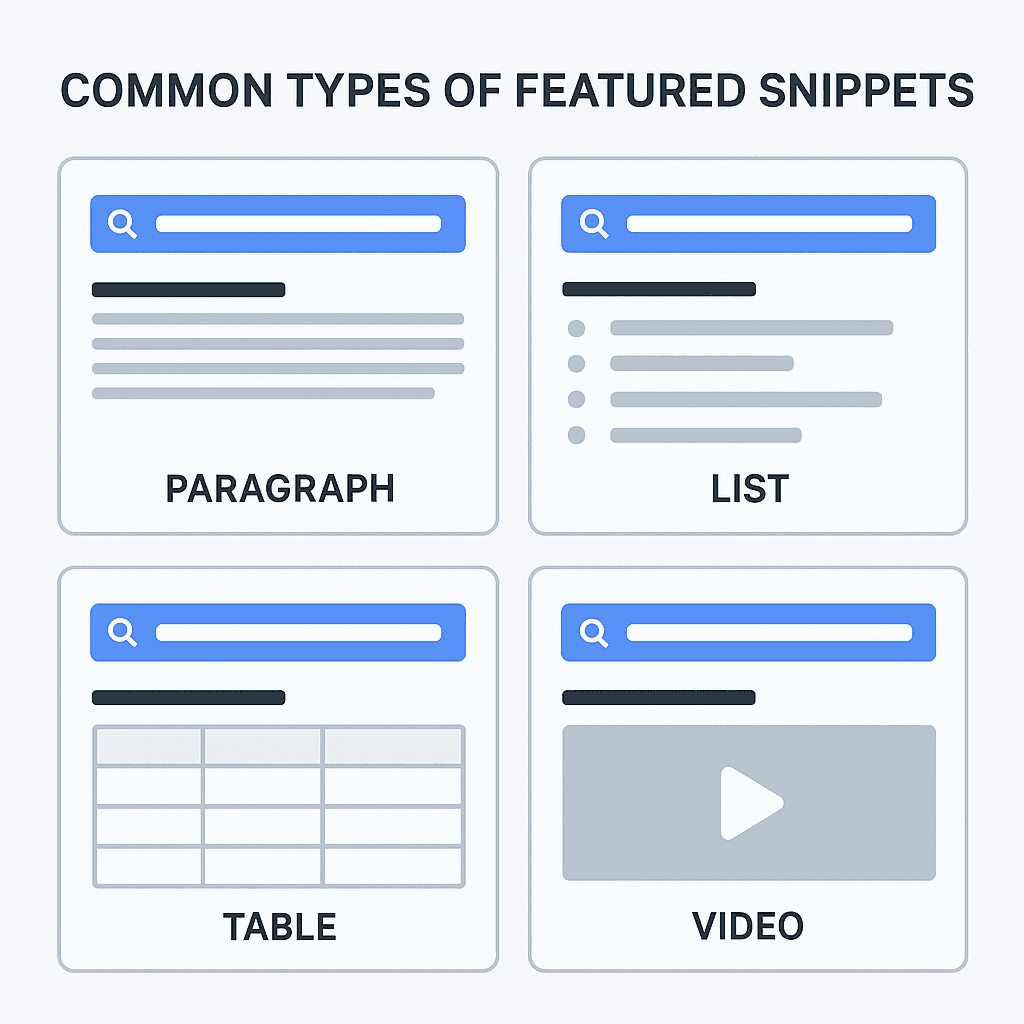
What Are Featured Snippets?
Featured snippets are special boxes that appear at the top of Google’s organic search results. These boxes provide users with a direct answer to their query, pulled from a webpage that Google deems highly relevant and authoritative. You’ll often see these snippets just beneath the ads and above the traditional organic links. They’re presented in various formats, including:- Paragraphs (the most common type)
- Lists (ordered and unordered)
- Tables
- Videos (especially for how-to or step-by-step queries)

Why Featured Snippets Matter in 2025
As user behaviour continues to evolve and voice search becomes more mainstream, featured snippets have become even more critical. With AI-powered assistants and mobile-first indexing playing larger roles in how content is discovered, the snippet that appears at Position Zero often becomes the only answer a user sees or hears or cares about. Here are a few reasons why targeting featured snippets should be a core part of your SEO strategy:- Increased visibility and brand authority: Even if your page ranks #1 organically, the snippet gets more eyeballs.
- Higher click-through rates (CTR): Some studies show that snippets can result in a CTR boost of 8% or more.
- Voice search dominance: Google Assistant, Siri, and Alexa often pull their spoken answers directly from featured snippets.
- Traffic from zero-click searches: Even when users don’t click, being in the snippet builds trust and awareness.
Understanding Google’s Intent Behind Snippets
To earn a featured snippet, you must first understand why Google shows them in the first place. Google's goal is simple: deliver the most relevant, concise answer to the user's query, as quickly as possible. This means your content needs to be:- Clear and well-structured
- Authoritative and trustworthy
- Directly aligned with the searcher’s intent
Types of Featured Snippets and How to Optimise for Each
Different queries trigger different snippet formats. To maximise your chances of earning a Google snippet, tailor your content to match the type of snippet that best fits the question.1. Paragraph Snippets
These are brief text answers (usually 40–60 words) that define or explain a concept which makes up about 70% of all featured snippets. These snippets usually answer “what”, “why”, and “how” questions. Example query : “ How to choose keywords for SEO? ” Snippet : “To choose keywords for SEO, start by understanding your target audience and identifying topics relevant to your business….” How to optimise : Create a concise definition or explanation in the first paragraph following a clear heading (like an H2 or H3). Use natural language and aim to answer the question directly and succinctly. For example: “A featured snippet is a selected search result that appears in a special box at the top of Google’s SERP, providing a direct answer to the user’s query.”2. List Snippets
These are either numbered or bulleted lists and are common for how-to guides or step-by-step processes. These snippets can either be ordered (steps) or unordered (bullet points). Example query : “ 9 Steps to create an effective SEO content strategy ” Snippet : A numbered list from a blog belonging to an SEO agency. How to optimise : Break down your process using clear subheadings or list tags in HTML. Ensure each step is well-structured and easy to follow. Google often pulls list items directly from your formatting.
3. Table Snippets
Google sometimes displays information in a table format, especially for pricing comparisons, statistics, or schedules. These are best used for comparisons. Example query : “Mortgage rates comparison 2025” Snippet: A table with product specs. How to optimise : Use HTML tables with clear headers. Make sure the table is simple, readable, and useful. Keep it relevant to the query and avoid stuffing it with too much data.4. Video Snippets
These snippets come from YouTube and often appear for DIY, tutorials, or how-to content. Example query : “How to bake sourdough bread” Snippet: A video snippet taken from YouTube How to optimise : Upload helpful, high-quality videos to YouTube. Use accurate titles, timestamps, and detailed video descriptions. Google often pulls these snippets from specific moments in videos, so timestamps help a lot.How to Get Featured Snippets: Proven Strategies in 2025
In order to obtain featured snippets on search engines such as Google, there are certain best practices and strategies you can employ to boost your chance of appearing on Position Zero on SERPs.Research Keywords Eligible for Snippets
Start with identifying the questions your target audience is asking. Use specialised tools to conduct keyword research like:- SEMrush’s “Keyword Magic Tool”
- Ahrefs “Questions” report
- AnswerThePublic
- Google’s “People also ask”
Provide Clear, Concise Answers
Think like Google: brevity matters. Understand users' search intent then aim to answer the question within the first 50–60 words of your section, then elaborate further below. Instead of hiding your main point deep in the content, make it prominent. Use a direct approach. For example: “How long does SEO take to work? SEO results typically take between 3 to 6 months to show measurable improvements, depending on competition, site health, and content strategy.”Structure Your Content for Readability
Use proper headings (H2, H3), short paragraphs, and ordered or unordered lists where needed. Google loves structured content, it’s easier to crawl, understand, and parse into a snippet. Also, include a “table of contents” if the article is long. This helps Google understand the hierarchy and flow of your article.Use Schema Markup
Schema markup helps Google better understand your content. While structured data isn’t a direct ranking factor for featured snippets, it can indirectly help with visibility. Use FAQPage, HowTo, and Article schemas where appropriate.Answer Multiple Questions on One Page
Pages that answer multiple related questions often perform well. For instance, an article about “How to start a blog” could also answer:- What platform should I use?
- How much does it cost?
- How long does it take to see traffic?
Optimise for Mobile and Voice
Most featured snippets are shown on mobile devices, and many are read aloud via voice search. Write in a natural, conversational tone. Use QA (questions and answers) formats to align with voice search queries like: “Hey Google, how do I write a good blog post?” Make your answers clear, crisp, and conversational.Common Mistakes to Avoid
Not all content is snippet-worthy. If you wish to appear on Position Zero then it’s in your best interest to avoid these pitfalls:- Writing vague or indirect answers
- Failing to format your content properly
- Overusing jargon or complicated language
- Ignoring search intent
- Neglecting user experience on mobile





